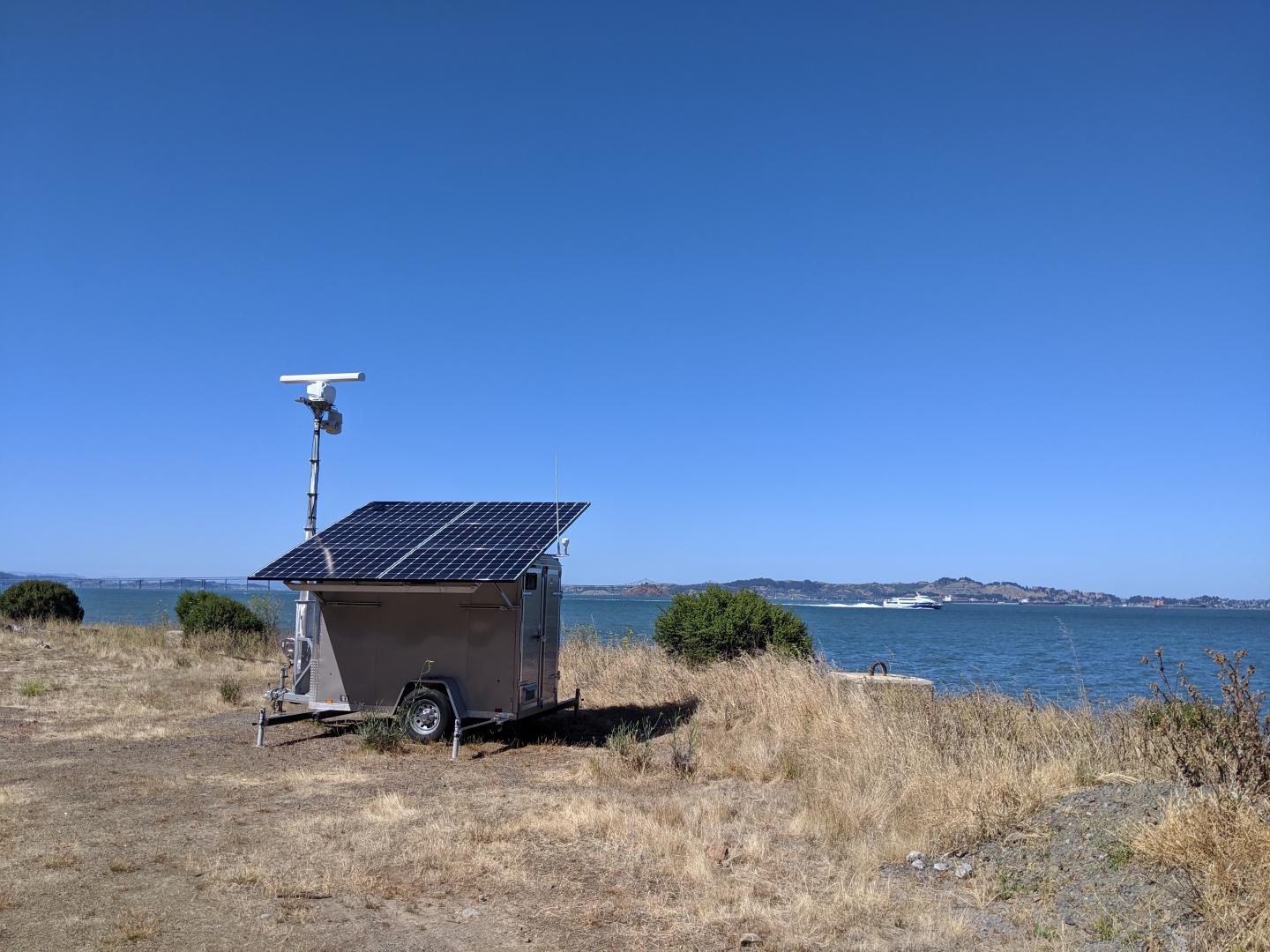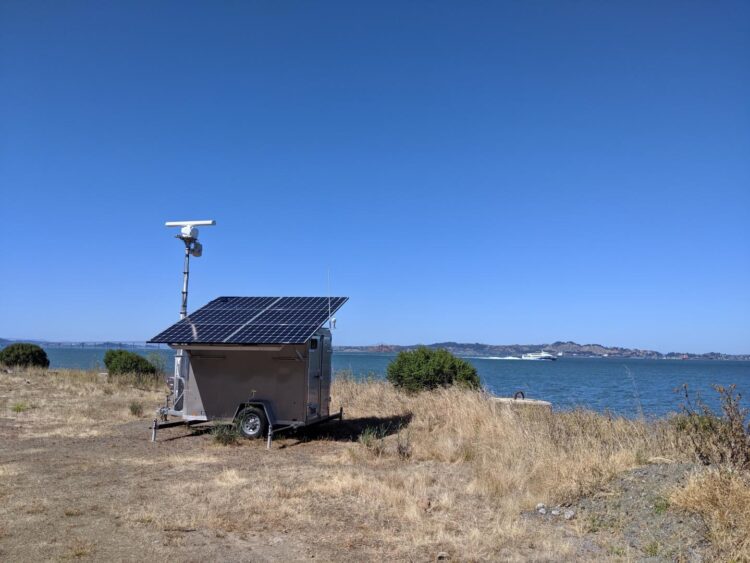
Credit: ProtectedSeas
Palo Alto, CA–In a new study, researchers found that recreational boats and high-speed ferries contribute significant underwater noise in San Francisco Bay, a highly urbanized coastline that is increasingly becoming a stop along the migratory routes of gray and humpback whales and home to bottlenose dolphins and harbor porpoises.
The study is the first of its kind to use radar to track boats not broadcasting information through the Automatic Identification System (AIS), a navigation safety system required onboard large commercial ships. The findings add to the growing evidence that smaller vessels, which are not required to broadcast data through the AIS, contribute significant underwater noise along urban coastlines.
Using the ProtectedSeas Marine Monitor (M2), an autonomous vessel-tracking system and high-definition camera, the research team, led by Samantha Cope, a researcher at the California-based Anthropocene Institute, tracked all types of vessel for 11 days in a region of San Francisco Bay where high-speed ferry, recreational, and commercial shipping traffic are common. The findings were recently published in the Journal of the Acoustical Society of America.
At the time of the study Cope was a master’s student in the Hines Lab at the San Francisco State University Estuary & Ocean Science (EOS) Center. In collaboration with SF State Professor Emeritus Roger Bland, the team combined hydrophone measurements of underwater sound from the EOS Center research pier with data from the M2 to trace the noise produced by individual vessels.
“With the recent influx of gray and humpback whales coming into the bay to feed within the last five years and more frequent carcasses that have washed ashore, it’s important that we quantify the threats to these marine mammals,” said Cope. “This is one of only a few studies to quantify vessel noise within the bay.”
Boat noise pollution can impact these animals’ abilities to find food, mates and navigate their underwater environment, putting them at an increased risk for collisions with vessels.
While larger vessels tended to produce the loudest noise, the researchers found that the biggest noise polluters by area were high-speed ferries, which made up 80 percent of the vessels observed in the study and covered 17 times more area than large commercial ships. Ferries, which make frequent trips across the Bay every day, are tracked by AIS but are also unique to San Francisco Bay and are an important part of the suite of threats to the marine mammals that come into the Bay.
“This is really cutting-edge research, and we’re very proud to have done it first here in the Bay,” said SF State Professor of Geography & Environment Ellen Hines, a study co-author, adding that the tracking technology has garnered interest from international researchers. “This has so many applications and is something that can be done remotely, easily and sustainably.”
According to Cope, the level of noise exposure due to recreational boats, which were primarily tracked by radar and not AIS, covered roughly twice as much area as exposure levels from large commercial ships.
“The M2 was a valuable tool for this type of analysis along an urban coastline where there are large amounts of recreational, non-AIS traffic,” said Cope.
The researchers plan to continue their work in the region, including a collaboration with the Marine Mammal Center tracking vessel traffic near the Golden Gate Bridge, which will allow them to capture information about all of the boats entering and leaving the Bay.
###
About Protected Seas’ Marine Monitor (M2) System
Marine Monitor (M2) is a lower cost solution for monitoring near-shore Marine Protected Areas (MPAs), that uses off-the-shelf radars to provide 24/7 situational awareness. Learn more at: https:/
About San Francisco State University
San Francisco State University is a doctoral public university serving students from the San Francisco Bay Area, across California and beyond, with nationally acclaimed programs that span a broad range of disciplines. Nearly 30,000 students enroll at the University each year, and its more than 253,000 graduates have contributed to the economic, cultural and civic fabric of San Francisco and beyond. Through them — and more than 1,700 world-class faculty members — SF State proudly embraces its legacy of academic excellence, community engagement and commitment to social justice. For more information, visit sfsu.edu.
Media Contact
Patrick Monahan
[email protected]





